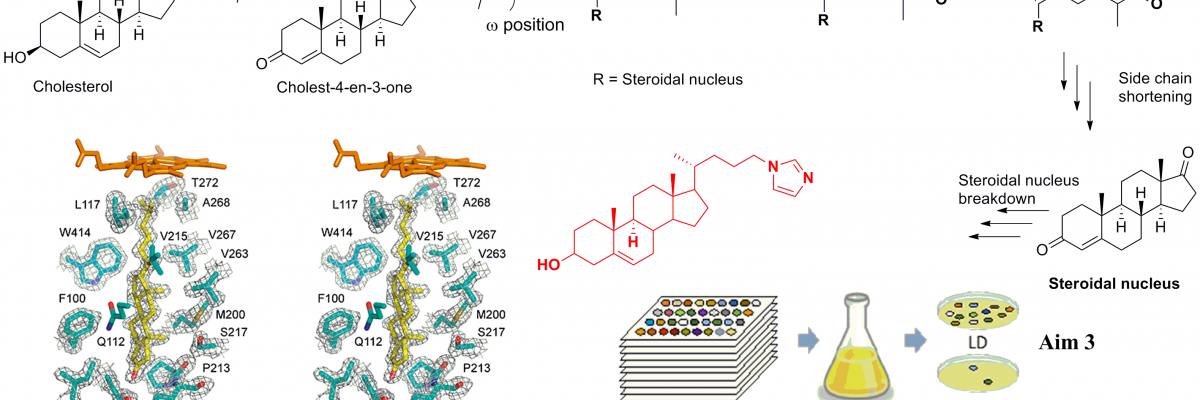Deciphering & exploiting bacterial cholesterol metabolism to combat disease
This chemistry honours research project will address the fundamental science behind the use of the steroid cholesterol as a source of energy by bacteria.
Cholesterol utilization for nutrition is a key feature of many bacterial species, particularly those of pathogenic species which have evolved to survive in niche environments. By understanding the enzymology, chemistry, and microbiology of a key set of enzymes involved the initial steps of cholesterol degradation, and developing strategies to block this activity, we aim turn a key strength of these bacterial species into a therapeutic target.
This knowledge acquired in this project is essential to develop effective strategies to combat the effects of pathogenic bacteria and may have future applications in the treatment of diseases such as Buruli ulcer and tuberculosis.
Project aims
To understand the specificity of enzymes in bacterial cholesterol metabolism.
- We will assess differences across cholesterol hydroxylating enzymes from a range of pathogenic bacteria i.e. same function but different amino acid sequence. Biochemical assays and X-ray crystallography will reveal the consequences of these differences for the activity of this essential step in cholesterol degradation.
To rationally design and synthesise potential inhibitors of specific P450s involved in cholesterol utilization.
- We will design and synthesize specific inhibitors based on a steroid framework for these CYP enzymes. These will prevent cholesterol metabolism, its availability as a carbon source and consequently bacterial viability.
Techniques used
In the laboratory, honours students employ a number of chemical and/or biochemical techniques. Organic and analytical chemistry techniques are used for the production, isolation and identification of hydroxylated organics from enzymatic turnovers and whole-cell reactions via HPLC, GC, GC-MS and NMR.
Genome analysis and molecular biology (e.g. gene cloning, rational mutagenesis and directed evolution), protein production using Escherichia coli and protein purification are performed.
The inorganic metal centres of the enzymes and the electron transfer proteins are analysed using UV/Vis and other spectroscopies. Structural studies (X-ray crystallography) of the proteins are undertaken.
The structures provide important information on how the enzymes function and the protein-protein interactions which control electron transfer. Projects can therefore be designed to be compatible for those with an interest in chemical synthesis/analysis or in the biochemical aspects of the work.
Study honours in medicinal chemistry
The Bell Group investigates the enzyme complement of metabolically diverse microorganisms (microbiology) to discover functional systems with applications in biocatalysis (chemistry) and to understand their physiological function e.g. electron transfer proteins and enzymes in involved in secondary metabolism (biochemistry).
This research is critical to understand the role of enzyme across a broad range of disciplines including medicine (drug metabolism and interactions), fine chemical synthesis (flavour and fragrance and drug metabolite generation) and bacterial secondary metabolism (synthesis of complex bioactive natural products).
Supervisor
- Associate Professor Stephen Bell
- Research area: Medicinal chemistry, structural biology, bacterial pathogens
- Recommended honours enrolment: Honours in Chemistry or Honours in Molecular and Biomedical Science

